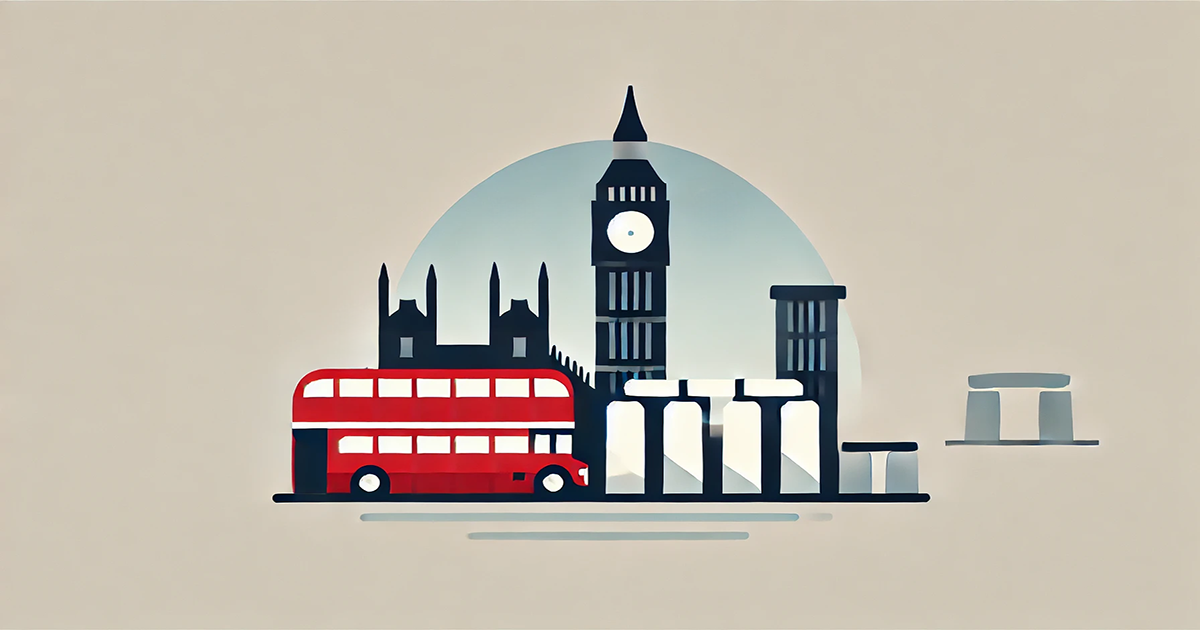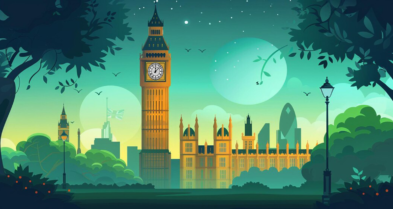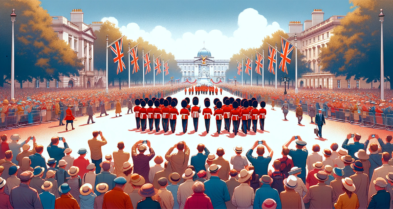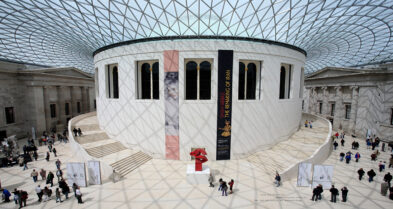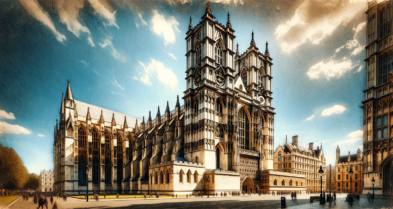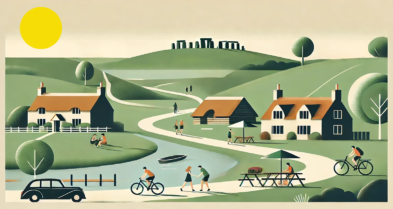The UK has a large network of public footpaths in the countryside. There are also many opportunities for mountain biking, mountaineering and hill walking. There are 15 national parks in England, Wales and Scotland. They are areas of protected countryside that everyone can visit, and where people live, work and look after the landscape.
There are many museums in the UK, which range from small community museums to large national and civic collections. Famous landmarks exist in towns, cities and the countryside throughout the UK. Most of them are open to the public to view (generally for a charge).
Many parts of the countryside and places of interest are kept open by the National Trust in England, Wales and Northern Ireland and the National Trust for Scotland. Both are charities that work to preserve important buildings, coastline and countryside in the UK. The National Trust was founded in 1895 by three volunteers. There are now more than 61,000 volunteers helping to keep the organisation running.
I. BIG BEN
Big Ben is the nickname for the great bell of the clock at the Houses of Parliament in London. Many people call the clock Big Ben as well. The clock is over 150 years old and is a popular tourist attraction. The clock tower is named ‘Elizabeth Tower’ in honour of Queen Elizabeth II’s Diamond Jubilee in 2012.

The tower was designed by Augustus Pugin in a neo-Gothic style. When completed in 1859, its clock was the largest and most accurate four-faced striking and chiming clock in the world. The tower stands 315 feet (96 m) tall, and the climb from ground level to the belfry is 334 steps. Its base is square, measuring 39 feet (12 m) on each side. Dials of the clock are 23 feet (7.0 m) in diameter. On 31 May 2009, celebrations were held to mark the tower’s 150th anniversary.
II. THE EDEN PROJECT
The Eden Project is located in Cornwall, in the south west of England. Its biomes, which are like giant greenhouses, house plants from all over the world. The Eden Project is also a charity which runs environmental and social projects internationally.
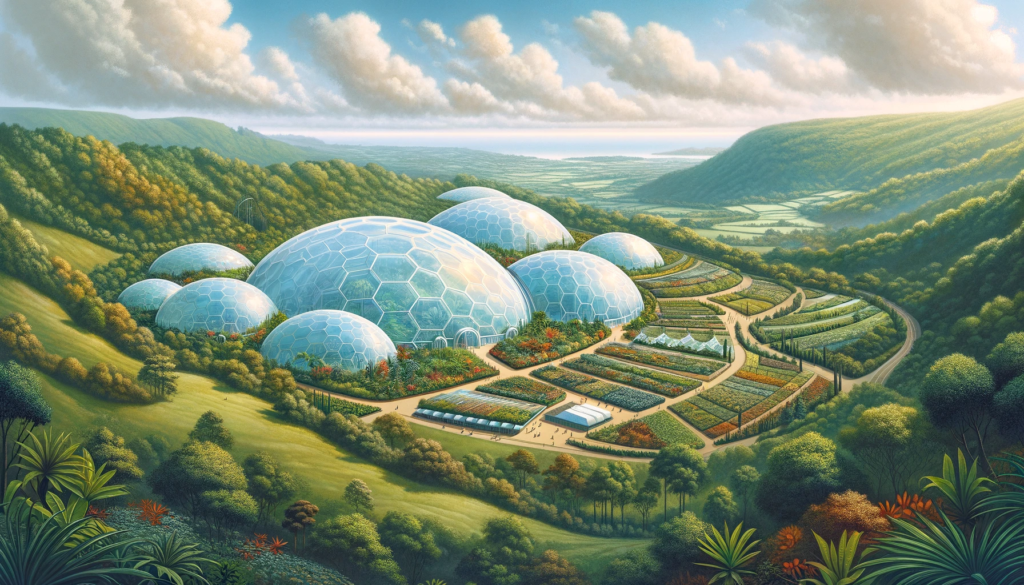
The complex is dominated by two huge enclosures consisting of adjoining domes that house thousands of plant species, and each enclosure emulates a natural biome. The biomes consist of hundreds of hexagonal and pentagonal, inflated, plastic cells supported by steel frames. The largest of the two biomes simulates a rainforest environment and the second, a Mediterranean environment. The attraction also has an outside botanical garden which is home to many plants and wildlife native to Cornwall and the UK in general; it also has many plants that provide an important and interesting backstory, for example, those with a prehistoric heritage.
III. THE EDINBURGH CASTLE
The Castle is a dominant feature of the skyline in Edinburgh, Scotland. It has a long history, dating back to the early Middle Ages. It is looked after by Historic Scotland, a Scottish government agency. Edinburgh Castle is a historic fortress which dominates the skyline of Edinburgh, the capital city of Scotland, from its position on the Castle Rock. Archaeologists have established human occupation of the rock since at least the Iron Age (2nd century AD), although the nature of the early settlement is unclear. There has been a royal castle on the rock since at least the reign of David I in the 12th century, and the site continued at times to be a royal residence until 1633.
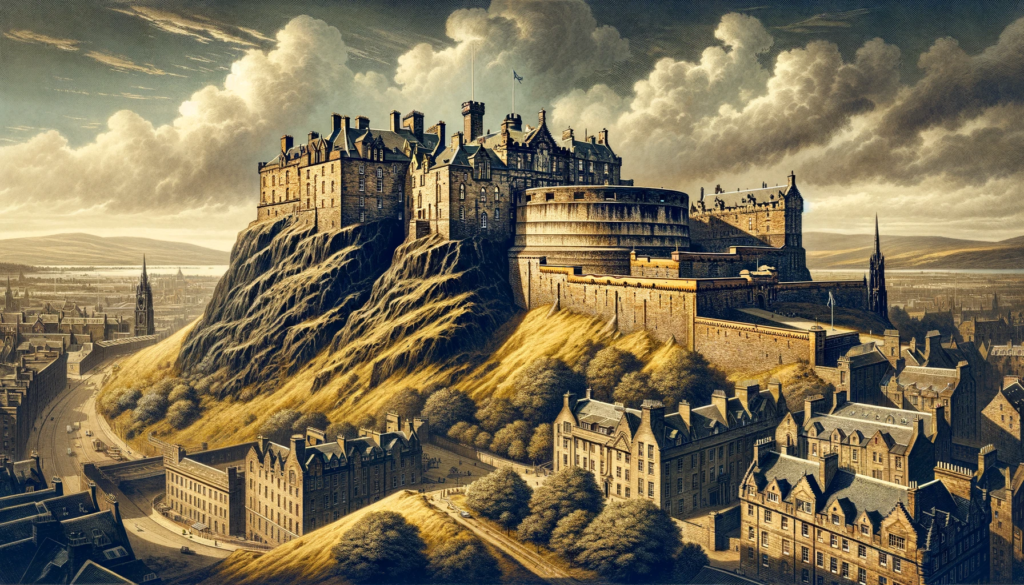
From the 15th century the castle’s residential role declined, and by the 17th century it was principally used as military barracks with a large garrison. Its importance as a part of Scotland’s national heritage was recognised increasingly from the early 19th century onwards, and various restoration programmes have been carried out over the past century and a half. As one of the most important strongholds in the Kingdom of Scotland, Edinburgh Castle was involved in many historical conflicts from the Wars of Scottish Independence in the 14th century to the Jacobite rising of 1745. Research undertaken in 2014 identified 26 sieges in its 1100-year-old history, giving it a claim to having been “the most besieged place in Great Britain and one of the most attacked in the world”
IV. GIANT’S CAUSEWAY
Giant’s Causeway – located on the north-east coast of Northern Ireland, the Giant’s Causeway is a land formation of columns made from volcanic lava. It was formed about 50 million years ago. There are many legends about the Causeway and how it was formed. The tops of the columns form stepping stones that lead from the cliff foot and disappear under the sea. Most of the columns are hexagonal, although some have four, five, seven or eight sides. The tallest are about 12 metres (39 ft) high, and the solidified lava in the cliffs is 28 metres (92 ft) thick in places.

Much of the Giant’s Causeway and Causeway Coast World Heritage Site is today owned and managed by the National Trust, and it is one of the most popular tourist attractions in Northern Ireland. Access to the Giant’s Causeway is free of charge: it is not necessary to go via the visitors centre, which charges a fee. The remainder of the site is owned by the Crown Estate and a number of private landowners.
V. LOCH LOMOND AND THE TROSSACHS NATIONAL PARK
This national park covers 720 square miles (1,865 square kilometres) in the west of Scotland. Loch Lomond is the largest expanse of fresh water in mainland Britain and probably the best-known part of the park.
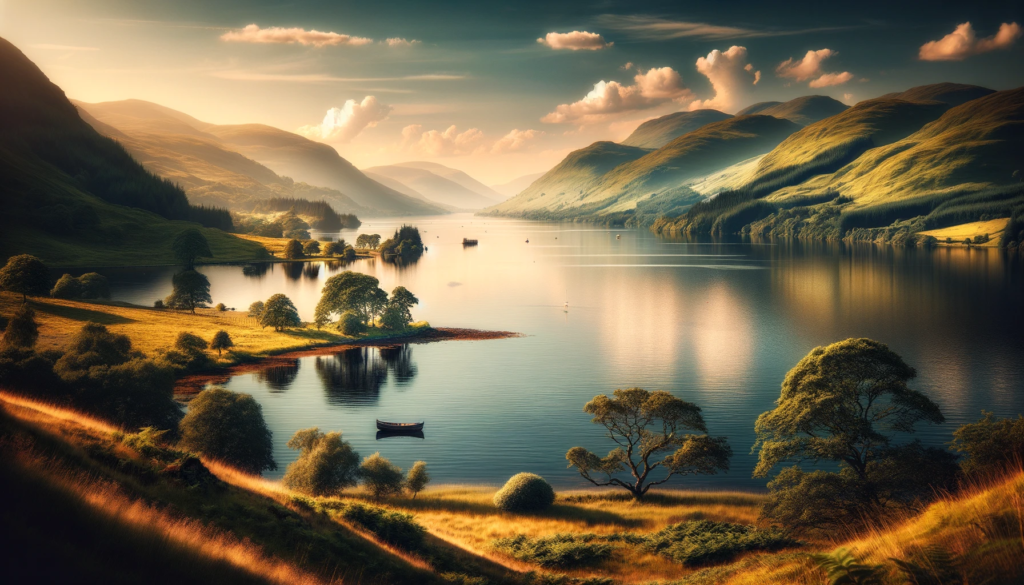
The park is the fourth largest in the British Isles, with a total area of 1,865 km2 (720 sq mi) and a boundary of some 350 km (220 mi) in length. It includes 21 Munros (including Ben Lomond, Ben Lui, Beinn Challuim, Ben More and two peaks called Ben Vorlich) and 20 Corbetts. There are two forest parks (Queen Elizabeth Forest Park and Argyll Forest Park), and two national nature reserves (NNR) (Loch Lomond National Nature Reserve and The Great Trossachs Forest National Nature Reserve) within the National Park. The Loch Lomond NNR is managed by Scottish Natural Heritage (SNH), and The Great Trossachs Forest by a partnership of Forestry and Land Scotland, RSPB Scotland and Woodland Trust Scotland.
VI. LONDON EYE
The London Eye, or the Millennium Wheel, is a cantilevered observation wheel on the South Bank of the River Thames in London. It is Europe’s tallest cantilevered observation wheel, and is the most popular paid tourist attraction in the United Kingdom with over 3.75 million visitors annually, and has made many appearances in popular culture.
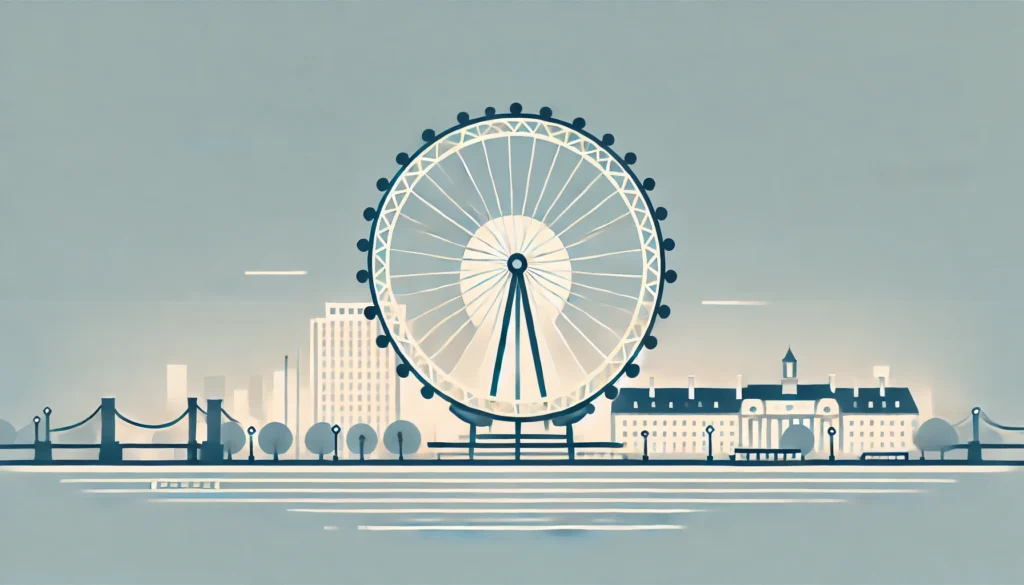
It is also used as part of New Year celebrations. The London Eye is situated on the southern bank of the River Thames and is a Ferris wheel that is 443 feet (135 metres) tall. It was originally built as part of the UK’s celebration of the new millennium and continues to be an important part of New Year celebrations.
The London Eye used to offer the highest public viewing point in London until it was superseded by the 245-metre-high (804 ft) observation deck on the 72nd floor of The Shard, which opened to the public on 1 February 2013
VII. SNOWDONIA
Snowdonia is a national park in North Wales. It covers an area of 838 square miles (2,170 square kilometres). Its most well-known landmark is Snowdon, which is the highest mountain in Wales. Snowdonia (Welsh: Eryri) is a mountainous region in northwestern Wales and a national park of 823 square miles (2,130 km2) in area. It was the first to be designated of the three national parks in Wales, in 1951. It contains the highest peaks in the United Kingdom outside of Scotland.

Snowdonia National Park (Welsh: Parc Cenedlaethol Eryri) was established in 1951 as the third national park in Britain, following the Peak District and the Lake District. It covers 827 square miles (2,140 km2), and has 37 miles (60 km) of coastline. The Snowdonia National Park covers parts of the counties of Gwynedd and Conwy.
VIII. THE TOWER OF LONDON
The Tower of London, officially Her Majesty’s Royal Palace and Fortress of the Tower of London, is a historic castle located on the north bank of the River Thames in central London. It lies within the London Borough of Tower Hamlets, which is separated from the eastern edge of the square mile of the City of London by the open space known as Tower Hill.The Tower of London was first built by William the Conqueror after he became king in 1066. Tours are given by the Yeoman Warders, also known as Beefeaters, who tell visitors about the building’s history. People can also see the Crown Jewels there.
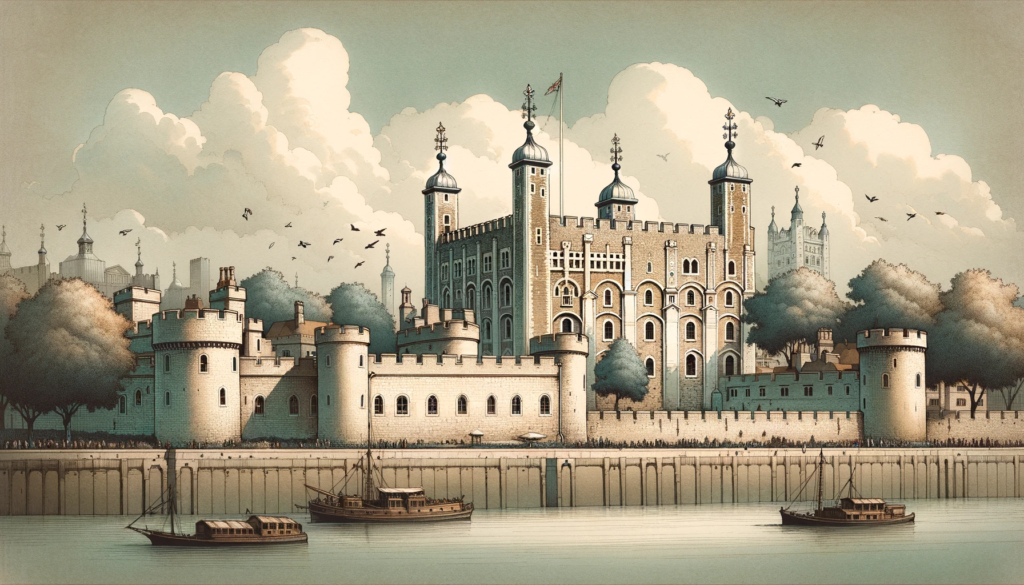
The Tower of London has played a prominent role in English history. It was besieged several times, and controlling it has been important to controlling the country. The Tower has served variously as an armoury, a treasury, a menagerie, the home of the Royal Mint, a public record office, and the home of the Crown Jewels of England.
IX. LAKE DISTRICT
The Lake District is England’s largest national park. It covers 885 square miles (2,292 square kilometres). It is famous for its lakes and mountains and is very popular with climbers, walkers and sailors.
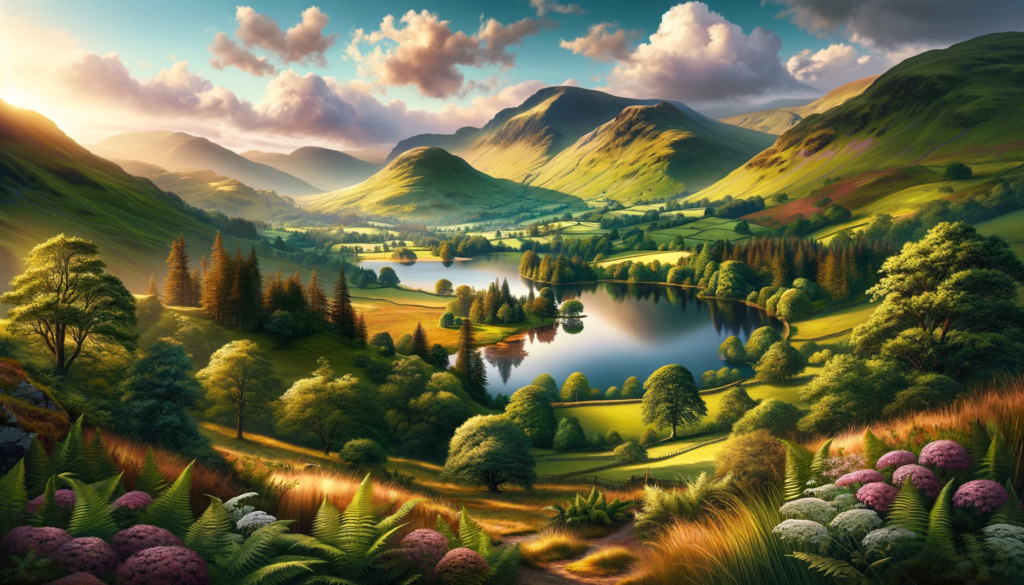
The biggest stretch of water is Windermere. In 2007, television viewers voted Wastwater as Britain’s favourite view.


